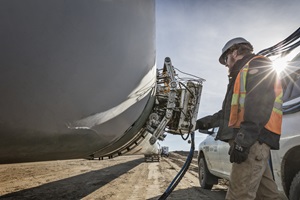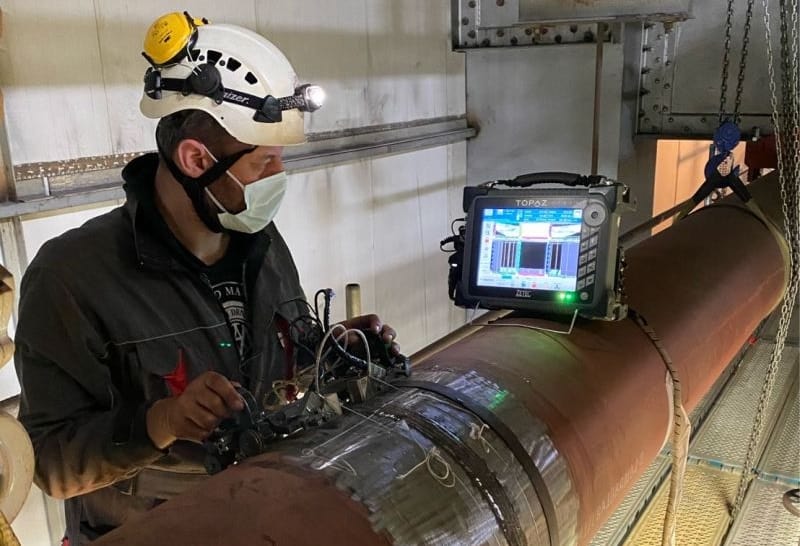Safety And Security First: Comprehensive Pipeline Welding Inspection for Every Job Phase
Safety And Security First: Comprehensive Pipeline Welding Inspection for Every Job Phase
Blog Article
Crucial Pipeline Welding Inspection Tips for Quality Control
In the world of pipeline building and construction, the honesty of welds holds extremely important relevance to make certain the safety and efficiency of the whole system. From natural gas to improved petroleum products, pipes develop the lifeline of various markets. However just how can one ensure the high quality of these welds that connect the pipeline areas? The response hinges on meticulous examination strategies and adherence to stringent quality control standards. By understanding the important pipeline welding evaluation ideas, professionals can prevent prospective dangers, decrease costly repair work, and maintain the integrity of these vital infrastructures.

Importance of Welding Evaluation
Welding evaluation plays a critical role in guaranteeing the structural stability and safety of pipe systems. By thoroughly checking out welds, inspectors can recognize any type of issues or blemishes that can compromise the integrity of the pipe. These examinations are essential for protecting against leakages, ruptures, and various other potentially devastating failings that could lead to ecological damage, economic losses, and also loss of life.
The significance of welding inspection can not be overemphasized, as the high quality of welds directly impacts the overall performance and durability of the pipeline. Through non-destructive testing techniques such as aesthetic evaluation, ultrasonic testing, radiography, and magnetic particle screening, inspectors can identify imperfections that might not show up to the naked eye. By identifying and attending to these problems early, welding evaluation helps to make sure that pipes satisfy industry criteria and governing requirements.
Ultimately, welding evaluation is a crucial aspect of quality control in pipe upkeep, fixing, and building and construction (Pipeline Welding Inspection). By upholding strenuous examination standards, market professionals can reduce threats and promote the safety and integrity of pipe systems
Usual Welding Flaws
Among the obstacles encountered in pipeline welding, usual problems can dramatically influence the structural honesty and performance of the bonded joints. Splits in the weld can circulate over time, compromising the structural integrity of the pipeline. Identifying and attending to these typical flaws through detailed inspection and high quality control processes are necessary for making certain the reliability and safety and security of pipe welds.
Examination Strategies for Pipes


In ensuring the structural honesty and dependability of pipeline welds, the application of rigorous assessment methods is extremely important. Numerous assessment techniques are employed to spot potential flaws and ensure the total high quality of the welds. Non-destructive testing (NDT) strategies such as radiographic testing, ultrasonic testing, magnetic fragment testing, and liquid penetrant screening are commonly utilized in pipe welding examination. Radiographic screening entails the use of X-rays or gamma rays to find inner flaws, while ultrasonic screening utilizes high-frequency sound waves to recognize blemishes. Magnetic bit screening works for finding surface-breaking flaws, and fluid penetrant testing is made use of to identify surface splits. Aesthetic evaluation is also essential in pipe welding to recognize any kind of visible problems or stoppages. Furthermore, computerized inspection strategies making use of sophisticated innovations like drones and robotics are increasingly being utilized to enhance the performance and precision of pipeline examinations. By using a mix of these assessment techniques, pipeline bonded high quality can be assured, and possible concerns can be alleviated before they escalate right into larger problems.
Making Certain Quality Control Criteria
To maintain strict quality guarantee criteria in pipeline building, careful adherence to established market protocols and standards is essential. Quality guarantee in welding processes requires a thorough method including numerous phases of pipeline construction. Executing a durable high quality management system that consists of routine audits and evaluations can better enhance the overall top quality guarantee requirements in pipe welding.
Protecting Against Pricey Repair Work
Offered the critical value of preserving strict quality control standards in pipeline building and construction, a positive method to preventing expensive repair work is necessary. By applying comprehensive evaluation protocols throughout the welding procedure, possible problems can be recognized and remedied at an early stage, inevitably saving both money and time. One essential element of avoiding expensive repairs is making sure that welders are effectively educated and certified, as this substantially reduces the probability of faulty welds that may lead to future failures. In addition, making use of sophisticated inspection techniques such as non-destructive testing can assist find any kind of defects or see page disparities in the welds prior to they rise right into significant troubles. Routine weblink upkeep checks and tracking of environmental elements that can impact the stability of the pipe are also critical in avoiding expensive repair services. By purchasing preventative procedures and focusing on quality control at every stage of the pipe welding process, business can lessen the threat of pricey fixings and guarantee the long-term integrity of their framework.
Verdict
In verdict, adherence to appropriate welding assessment methods is vital for making sure the quality and integrity of pipes. By identifying usual welding problems and carrying out comprehensive assessment procedures, pricey fixings can be protected against, and quality control standards can be satisfied - Pipeline Welding Inspection. It is crucial for pipe welders to focus on assessment treatments to preserve the safety and security and dependability of the infrastructure they are functioning on
The value of welding examination can not be overemphasized, as the quality of welds straight impacts the overall efficiency and long life of the pipeline. Non-destructive screening (NDT) strategies such as radiographic screening, ultrasonic testing, magnetic bit testing, and liquid penetrant testing are generally used in pipe welding assessment. Aesthetic examination is likewise crucial in pipe welding to identify any type of visible problems or interruptions. Furthermore, automated assessment strategies making use of sophisticated innovations like robotics and drones are significantly being utilized to enhance the performance site link and precision of pipe evaluations.In final thought, adherence to appropriate welding evaluation methods is crucial for making certain the top quality and honesty of pipelines.
Report this page